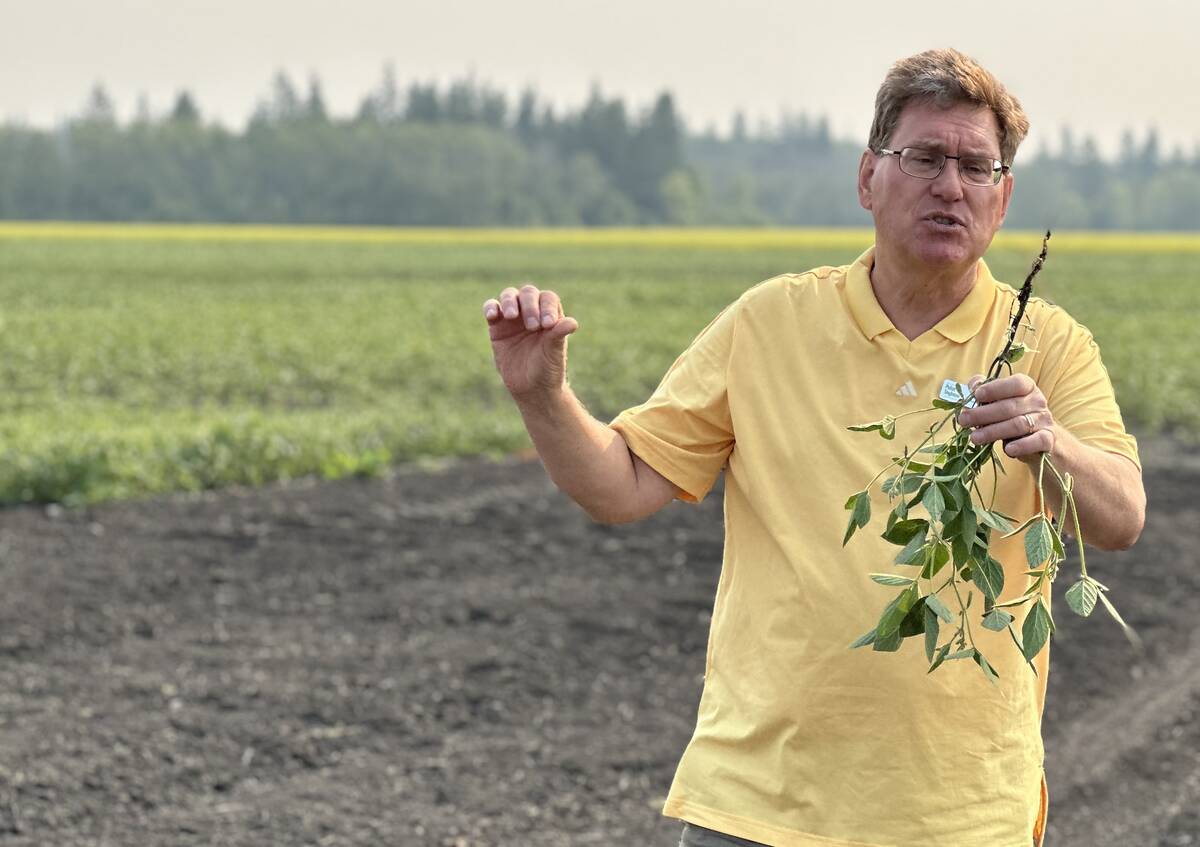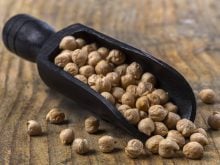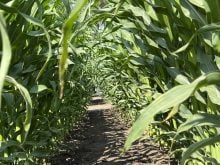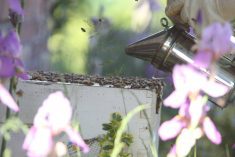Glacier FarmMedia – Drought conditions are slamming soybean and pulse crops across affected areas of Manitoba — and nowhere is the hit landing harder than in the Interlake.
The agricultural region between Lake Winnipeg and Lake Manitoba is “certainly suffering the most out of all the areas that I travel,” said Terry Buss, a production agronomist with Manitoba Pulse and Soybean Growers.
The crowd listening to Buss had likely just seen the impact with their own eyes.
Read Also
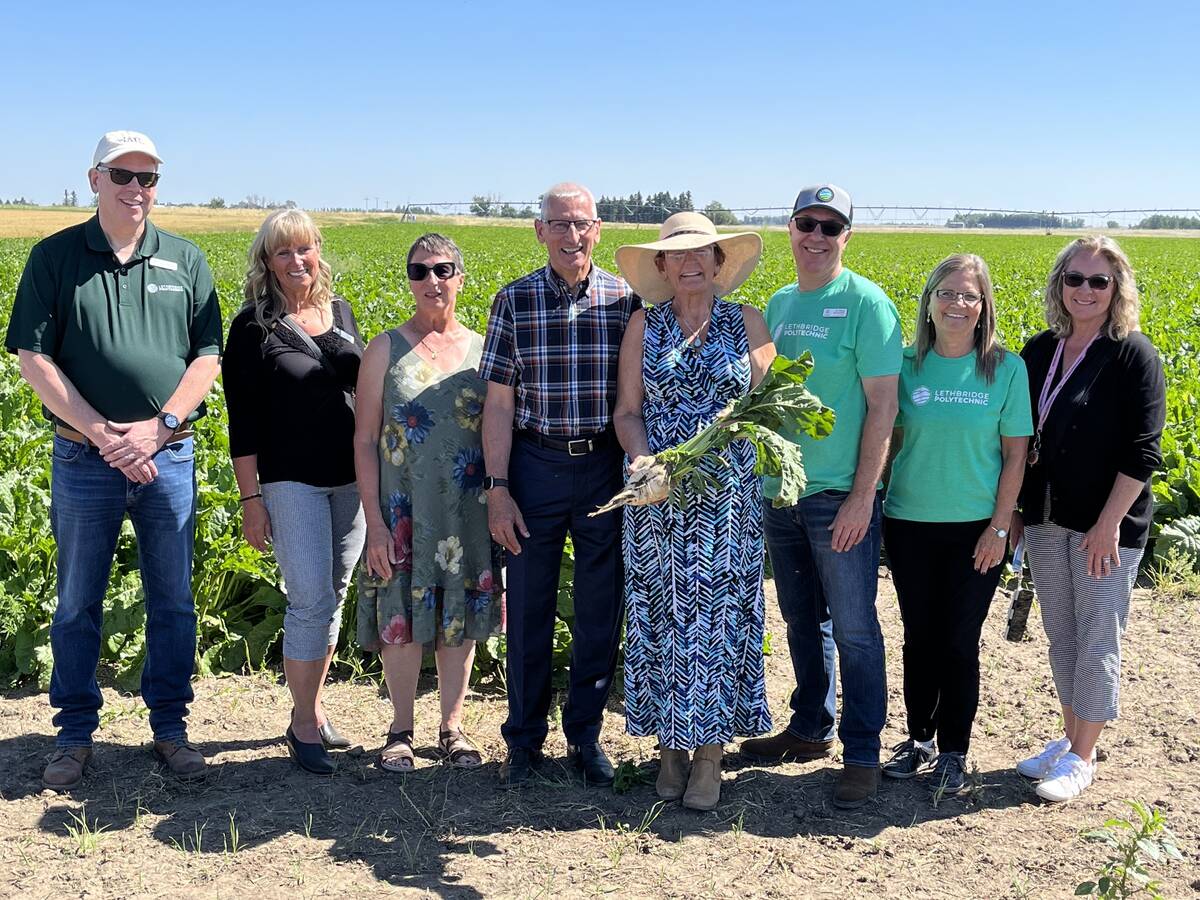
Lethbridge Polytechnic receives major donation
Multimillion-dollar donation by Hranac family aids Lethbridge Polytechnic’s research in integrated food production systems, irrigation science and post-harvest technology in Alberta
Buss was speaking at the Prairies East Sustainable Agriculture Initiative (PESAI) farm tour in Arborg on July 30.
According to the nearest provincial weather station, Buss noted that Arborg was sitting at 39 per cent of normal rain for the growing season.
Parts of the region were even drier. As of Aug. 4, Fisher Branch had seen only 24 per cent of its normal rain, according to Manitoba Agriculture data.
Buss, who covers the Interlake and eastern parts of the province, noted the contrast between those driest regions of the province and southern Manitoba.
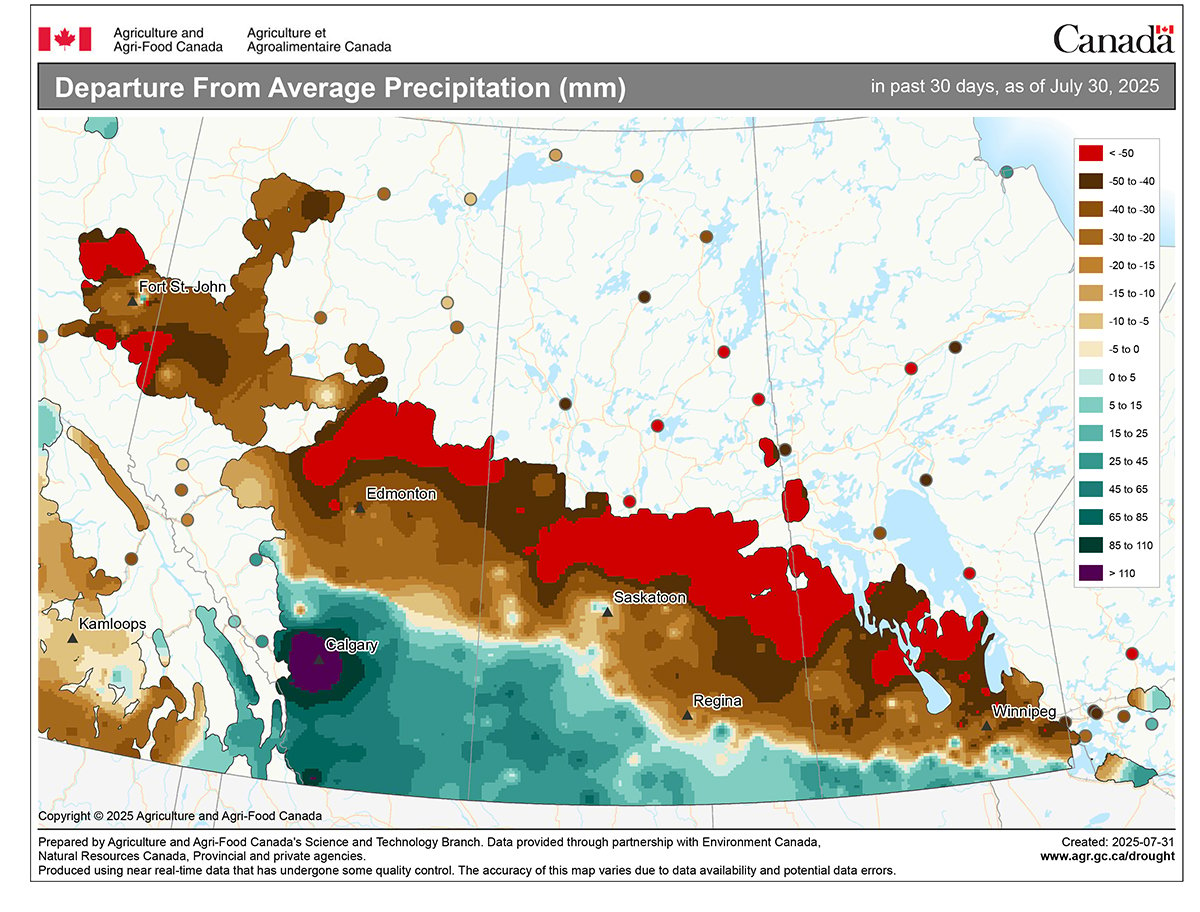
Central Manitoba’s rainfall is still well below average, with some patches registering as low as 35 to 50 per cent, but many more parts of the region are closer to 60 to 80 per cent, and a few stations had crept to 90 per cent or more as of early August. The southwest has seen some patches at around 50 per cent, but it’s the only area of the province with multiple stations reporting close to normal rain.
In contrast, the wettest area of the Interlake had barely topped half of normal.
Both the northwest and major pulse and soybean regions in the east are in a similar boat: dry, but not as critically dry as the Interlake. The east ranged between 41 and 72 per cent of normal as of Aug. 4.
“We keep playing this game of just staying ahead of really seeing severe drought in our crops,” Buss said of eastern Manitoba.
“As I look around at these plots, we’ve got some permanent damage going on here (in Arborg).”
Still, the soybeans in the Arborg research plots surprised him with how well they were holding on. Days earlier, the crop had received about an inch of rain, and new flowering was still taking place.
“These beans look rough, but beans have a very long reproductive phase. We’ve still got flowering going on,” Buss said.
“Hopefully they can make good use of that inch of water, but it’s not going to be enough. This is basically a failed crop unless there’s another inch coming in the next little while.”
Field peas, meanwhile, aren’t showing the same resilience. The research plants at Arborg are already drying down and the yield potential looks low, Buss said.
“The thing to remember about field peas is they are not drought tolerant,” he said.
“They get this reputation that they’re drought tolerant because they grow them in Saskatchewan. They’re not. They’re moisture-use efficient. (That’s a) different thing.”
Peas can produce impressive dry matter with minimal water, he said, but they need moist soil in the top 18 inches. That’s exactly what this season is lacking.
Once those topsoil layers dry out, peas typically struggle.
“They’re worse than soybeans that way, and that’s what we’re seeing at these plots,” Buss said.
He added that peas don’t handle excess water well either, which limits their fit in wetter parts of the province. In southeastern Manitoba, where soybeans are more common, peas have had mixed results.
Some pea fields in the southeast are faring better than others, Buss noted.
“In Beausejour, they’re about twice this size,” he said.
“But we’re still being nipped a bit for yield. They are starting to prematurely dry down. But we’re not in as bad shape as you are.”
While drought was the overarching concern, Buss also flagged emerging pest issues, especially in soybeans.
Soybean aphids, which had been largely absent for several years, are reappearing in fields across southern Manitoba, particularly near the U.S. border and south of the Trans-Canada Highway. Buss said he’s heard of counts as high as 100 aphids per plant — although that’s still significantly lower than the 250-per-plant economic threshold.
There’s some wiggle room around that number, he warned.
“It’s 250 and rising,” he said, not a flat rate.
“Soybean aphids require multiple (scouting) visits, at least three, a few days apart. You may approach (at) 250 per plant, but then you may find that they start to decline, and that’s because the lady bugs and all the other predators are starting to take them down for you.”
A premature spray pass will also take out those natural predators.
The true economic threshold for the pest is much higher — around 657 aphids per plant. Because aphid populations can explode so quickly, growers are encouraged to act earlier, but only if numbers are on the rise.
“We should view spraying as a last-ditch measure, not as something we automatically do,” Buss said.
“People waste a lot of money or even cause further infestations because they pulled the trigger too soon.”
He encouraged farmers to make use of the free Aphid Advisor app, which helps factor beneficial insects into management decisions.
Two-spotted spider mites also appeared earlier than usual this year, Buss said, likely due to the hot, dry weather.
“This is the earliest I’ve ever heard of them,” he said.
“This has always been an August problem for me, and this year it’s a July problem.”
Spider mite damage typically starts along field edges. Growers might spot stippling or bronzed leaves. Left unchecked, the tiny pests can infest entire fields, drawing water and nutrients from the plant and compounding drought stress.
“If you can catch that white stippling on the edge of the field, you may have a chance to do just around (the) outside round and stop them in their tracks,” Buss said.
Peas had their own pest problems earlier this season.
Pea leaf weevils have showed up in large numbers in western Manitoba, and Buss said the province saw some of its worst damage to date. The main concern isn’t the leaf feeding, but rather that the larvae tunnel into the soil and feed on nitrogen-fixing nodules.
To date, Buss said he hasn’t seen any evidence of the pest in eastern Manitoba.
The jury is still out on the best way to control pea weevils. Manitoba Pulse and Soybean Growers is working with partners to test insecticidal seed treatments as a possible solution.
Pea aphids have also made appearances in Manitoba fields this year, though pressure was variable. Those aphids are typically scouted during flowering, with treatment applied at early pod.
Disease pressure has been low in both crops so far, Buss said in late July.




